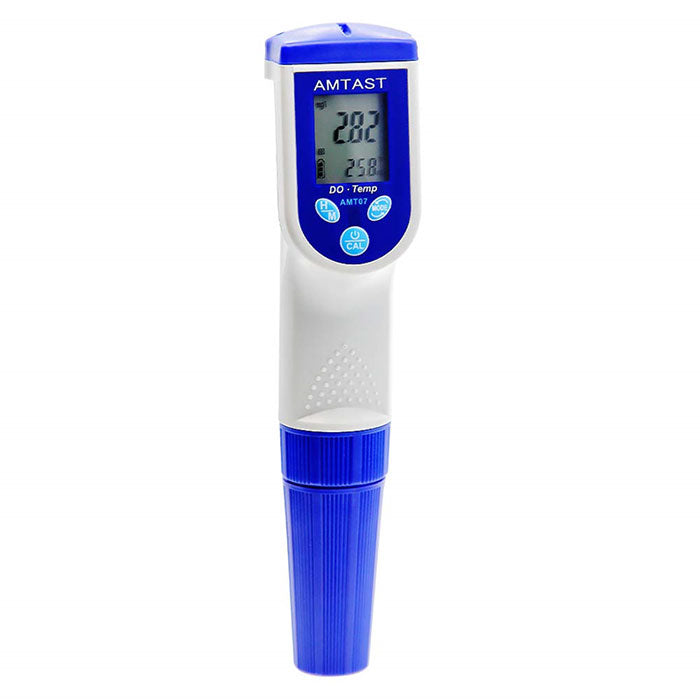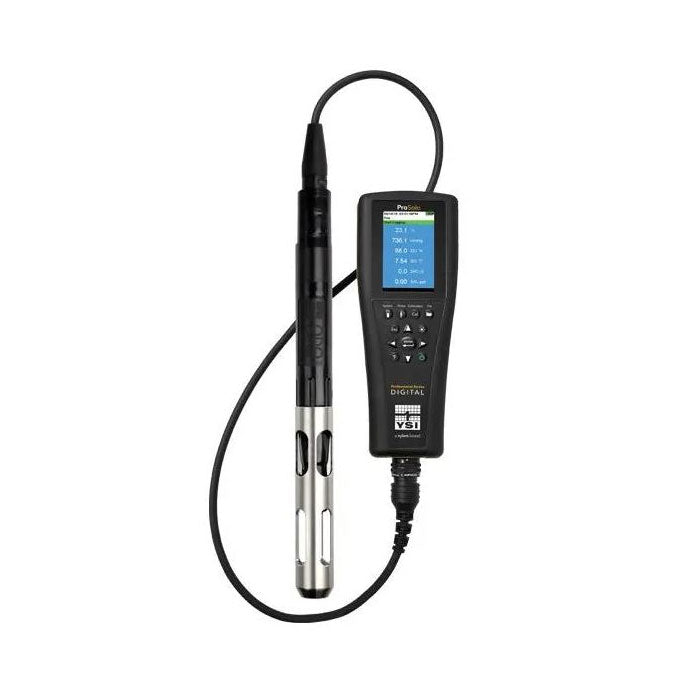Dissolved Oxygen Meters For Hydroponics
Dissolved Oxygen (DO) is simply the quantity of oxygen (O2) dissolved in water. Humans need the proper amount of oxygen in the atmosphere to survive. And, just as aquatic animals like fish need the right amount of dissolved oxygen in the water to survive and thrive, so do aquatic plants.
Dissolved oxygen in water is a critical parameter in any greenhouse and hydroponic operation. DO is required for plant respiration, which impacts nutrient uptake. DO is also important for root zone health, as low oxygen levels favor harmful anaerobic organisms that cause root rot (e.g. Pythium and Fusarium). Sufficient DO levels promote an aerobic environment favoring beneficial microorganisms.
In hydro systems where the roots are submerged, aeration of the nutrient solution is crucial to assure healthy root growth. Dissolved oxygen (DO) levels of 5 mg/L and above are advised, as levels below this are harmful and possibly fatal to plants.
However, a DO concentration of 5 mg/L is tough to maintain in greenhouse settings. As the temperature of water increases, oxygen solubility declines.
The raised temperatures in greenhouses result in low DO solubility, as well as higher root respiration and oxygen consumption. DO concentrations greater than 5 mg/L can be maintained by adding aeration. Aeration can be achieved by the use of air pumps and oxygen diffusers, additions of chemicals such as hydrogen peroxide or ozone, or physically by rapid mixing.
How To Measure Dissolved Oxygen?
There are three methods available for measuring dissolved oxygen concentrations. This is done by colorimetry, titration, or with a sensor and meter.
The colorimetric method offers a basic approximation of dissolved oxygen concentrations in a water sample. There are two methods designed for high-range and low-range dissolved oxygen concentrations. These methods are swift and budget-friendly for simple tasks, yet limited in range and liable to fault caused by other oxidizing agents in the water.
The traditional way is the Winkler titration. For a long time, this technique was seen as the most precise and exact. However, it is more challenging to carry out than the other techniques, and is prone to human error, especially in outdoor settings. The Winkler method exists in seven modified versions, which are still used to this day.
The most popular method for measuring dissolved oxygen is with a meter and sensor. While the general categories of DO sensors are optical and electrochemical, electrochemical sensors can be further broken down into polarographic, pulsed polarographic, and galvanic sensors.
In addition to the standard analog output, several of these dissolved oxygen sensor technologies are available in a smart sensor platform with a digital output.
What Is A Dissolved Oxygen Meter?
Dissolved oxygen meters are designed to measure the amount of gaseous oxygen dissolved in water. Dissolved oxygen meters generally consist of a probe with a sensor and an electronics unit that interprets and shows the data sent from the sensor. The sensor is the main component of DO meters. There are two main types of dissolved oxygen sensing technologies, which are electrochemical sensors and optical sensors.
Dissolved Oxygen Sensor Types
Electrochemical Sensors
Dr. Leland Clark developed the original electrochemical (or amperometric) sensor in 1953 and since then the core technology has changed very little.
In an electrochemical DO sensor, dissolved oxygen diffuses from the water sample through an oxygen-permeable membrane and into the sensor. Inside the sensor, the oxygen undergoes a chemical reduction reaction, which creates an electrical signal. This signal is then read by the dissolved oxygen instrument.
Optical Sensors
An optical dissolved oxygen sensor cap contains a luminescent dye, which glows a red light when exposed to blue light. Oxygen interferes with the luminescent properties of the dye, an effect called “quenching.” A photodiode compares the “quenched” luminescence to a reference reading, allowing the calculation of dissolved oxygen concentration in water.
Dont Forget To Calibrate Your DO Meters
Periodic calibration is the best way to guarantee correct dissolved oxygen measurements. As a general rule, the data gathered is only as accurate as the calibration accomplished prior to data collection.
Calibration of DO probes consists of exposing the sensor to a sample with a known DO content. The instrument is then adjusted to read that value.
The frequency of calibrations depends on the type of sensor. Galvanic and polarographic sensors, for example, should be calibrated every day that they are used in a spot sampling application. Optical sensors, on the other hand, have superb stability making them less susceptible to drift and allowing them to hold their calibration for many months.
Final Thoughts On DO Meters
Knowing the dissolved oxygen content of your water is super important for any hydroponic application. Call one of our experience reps at 888-815-9763 for help picking out a DO meter!


